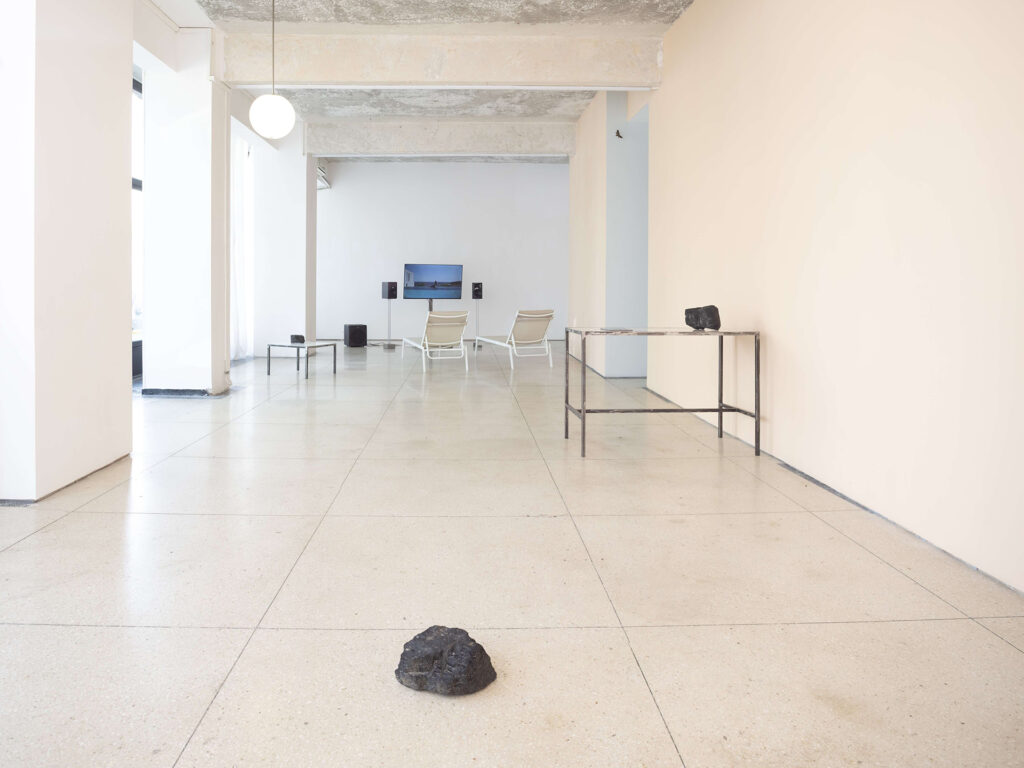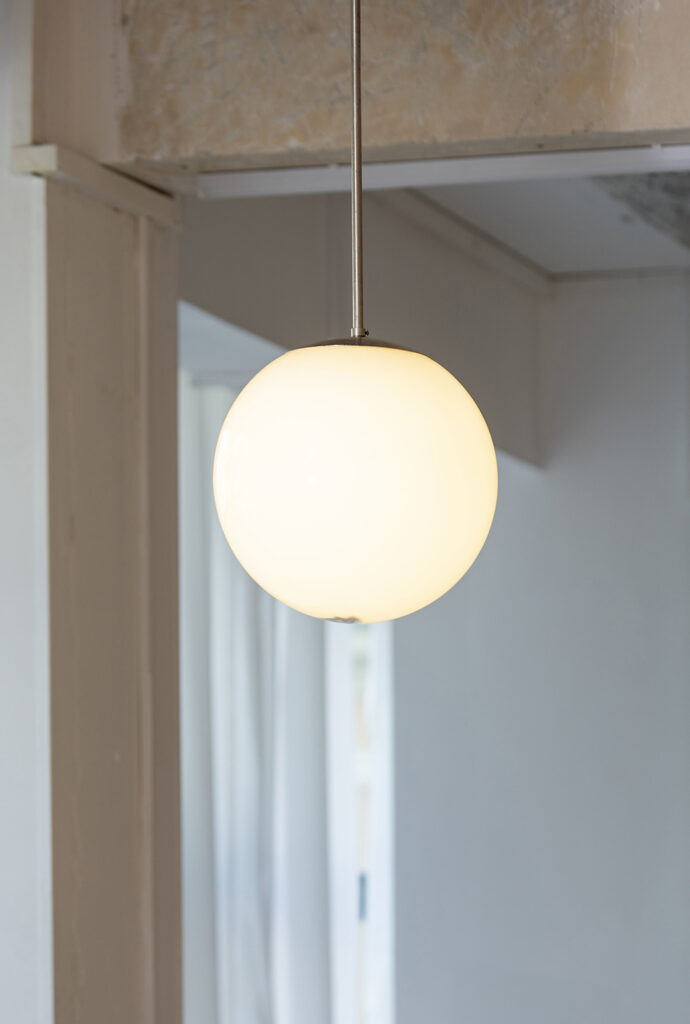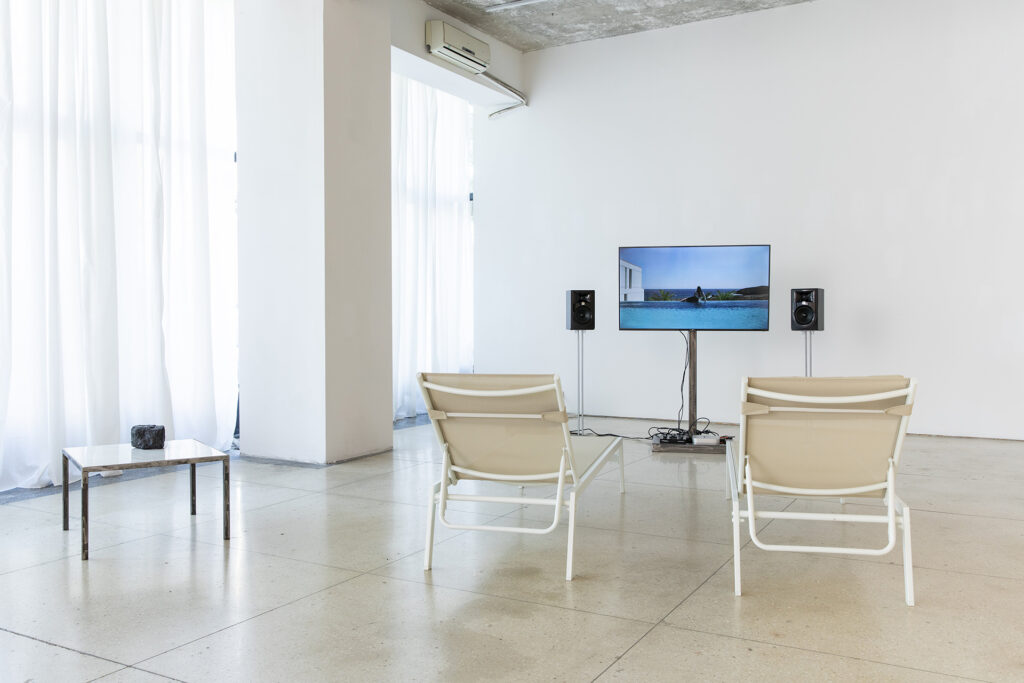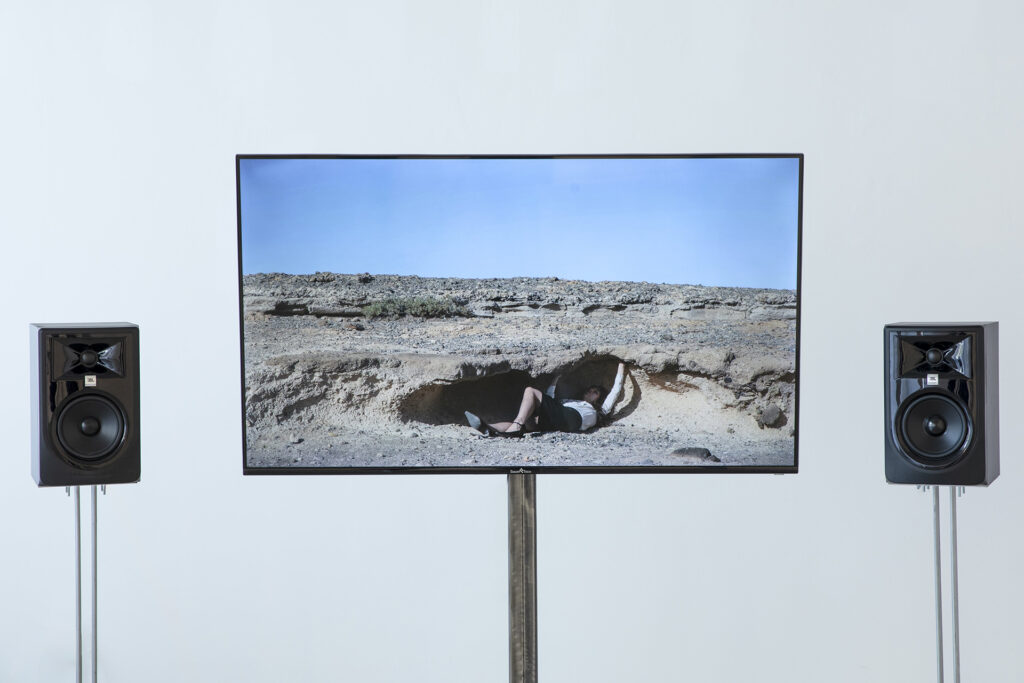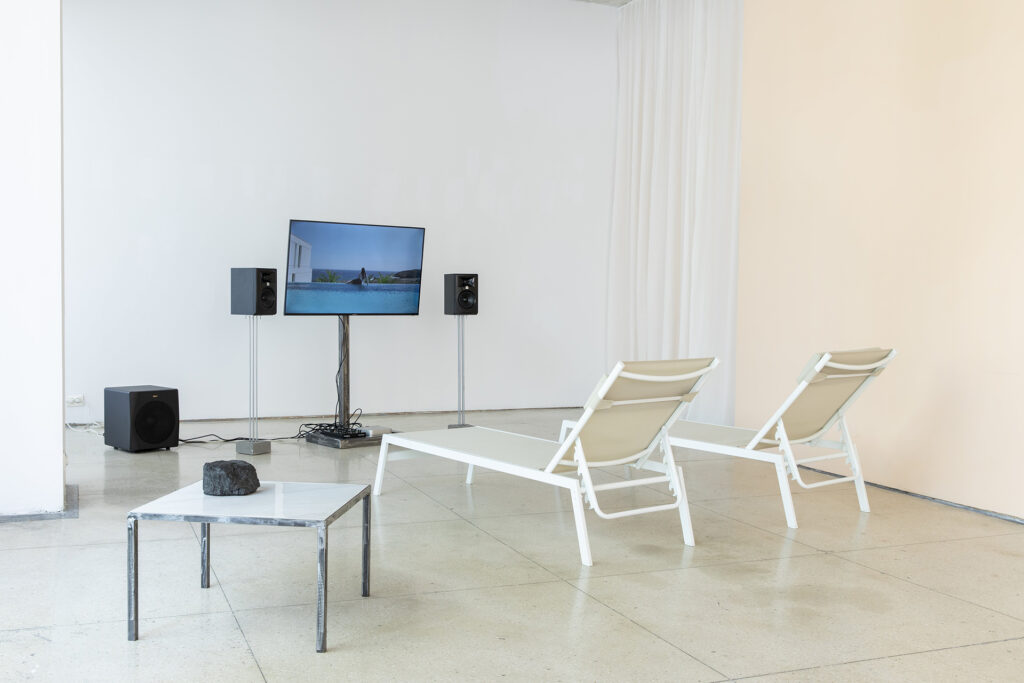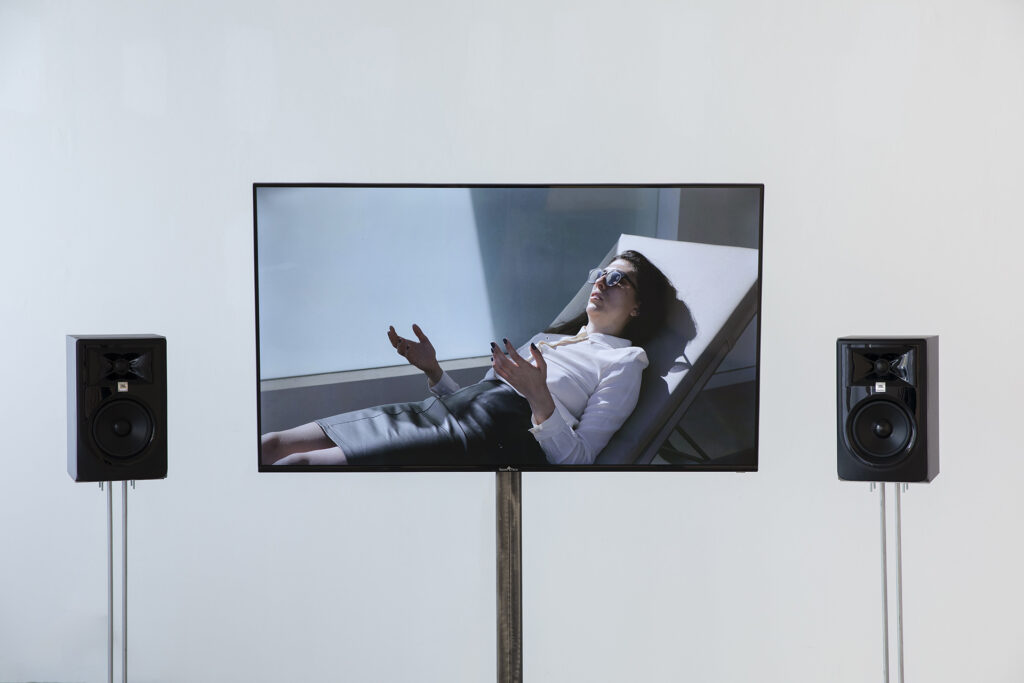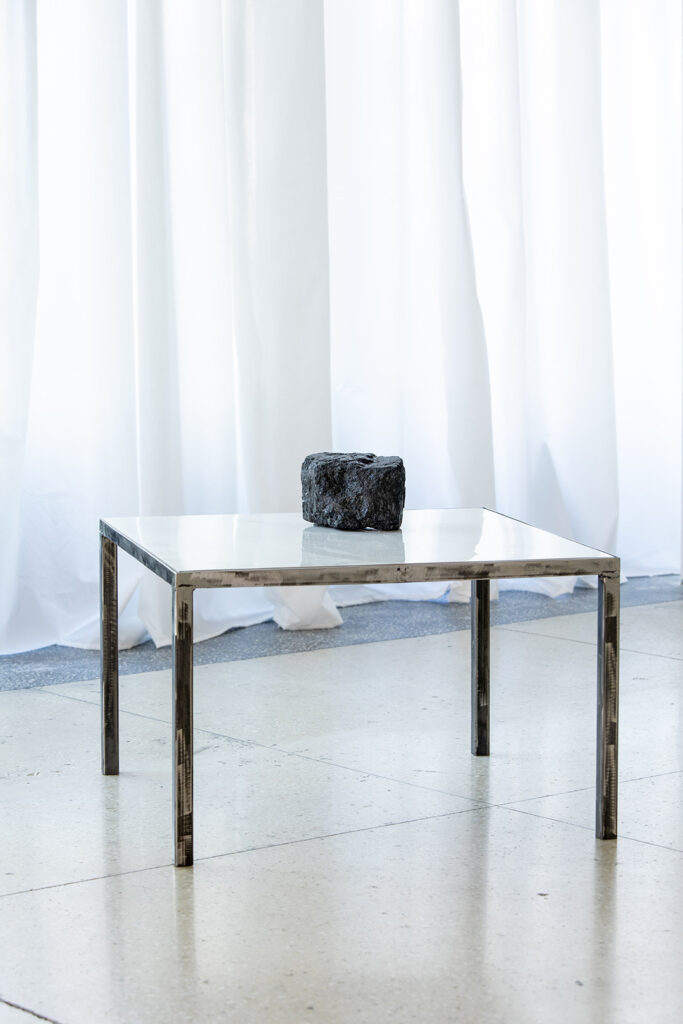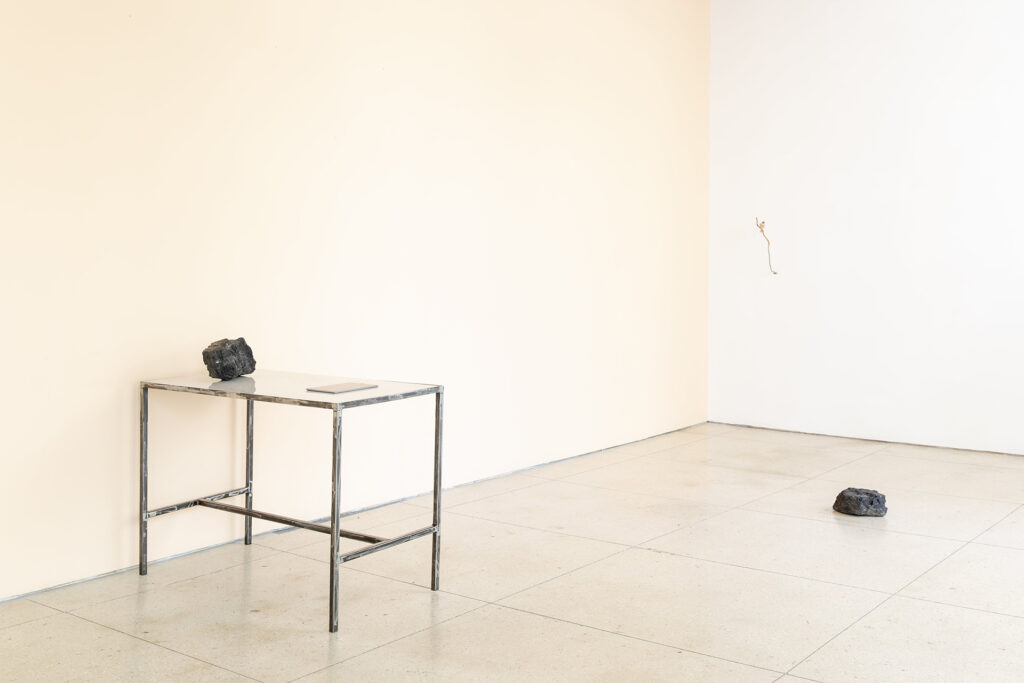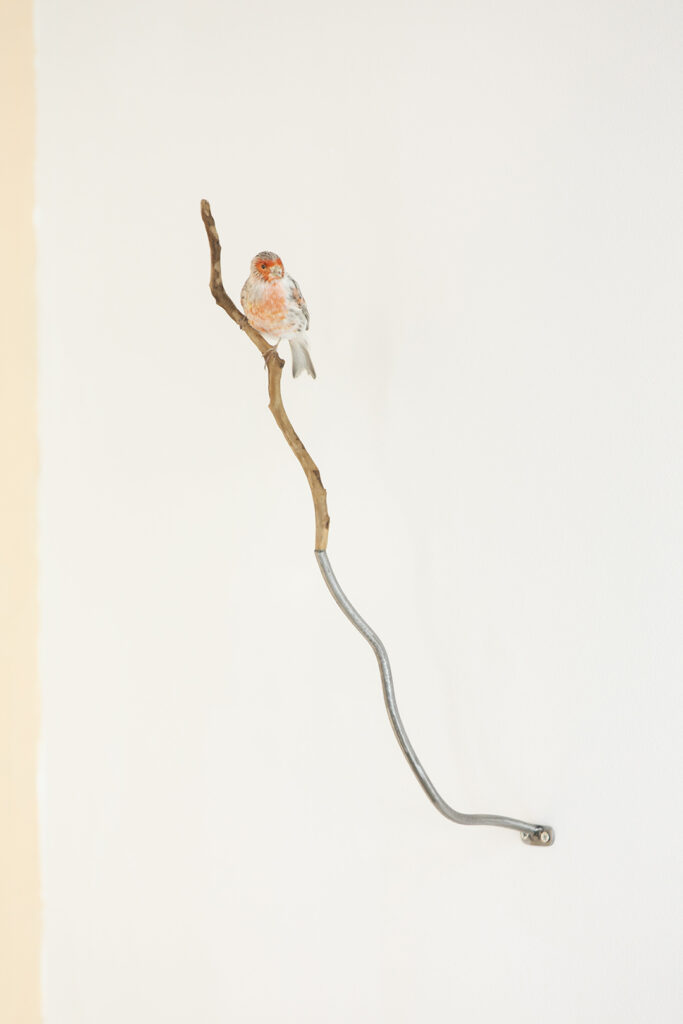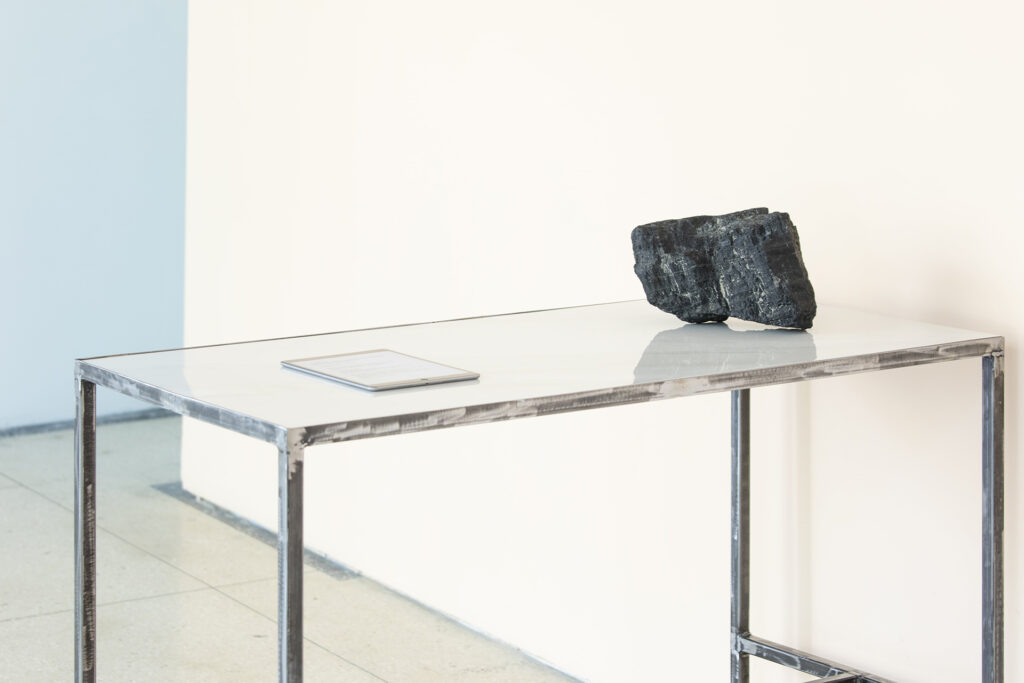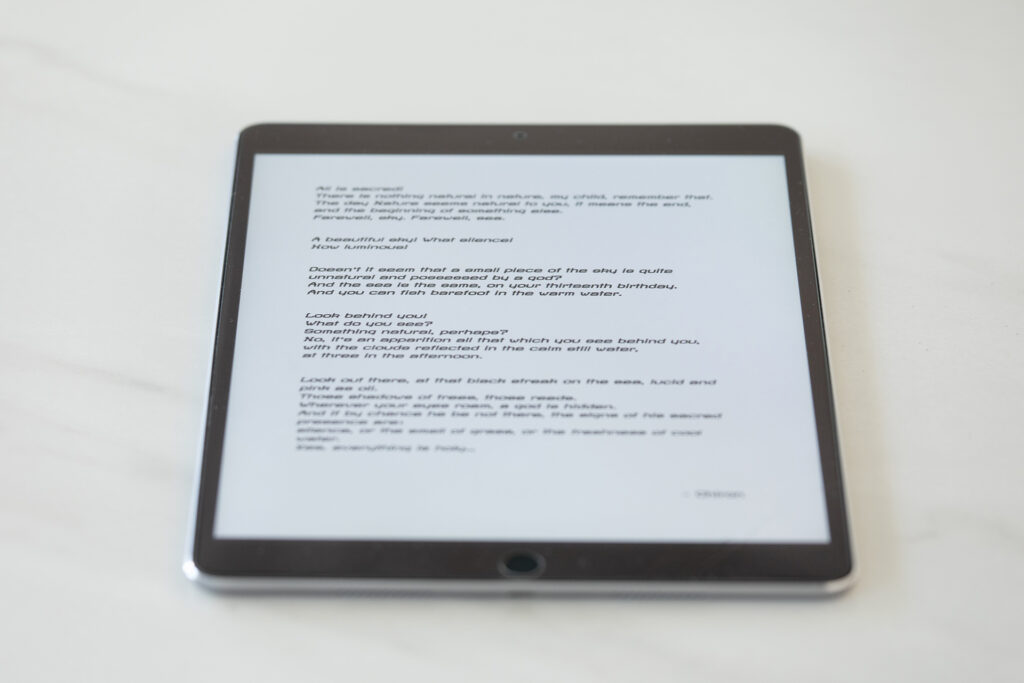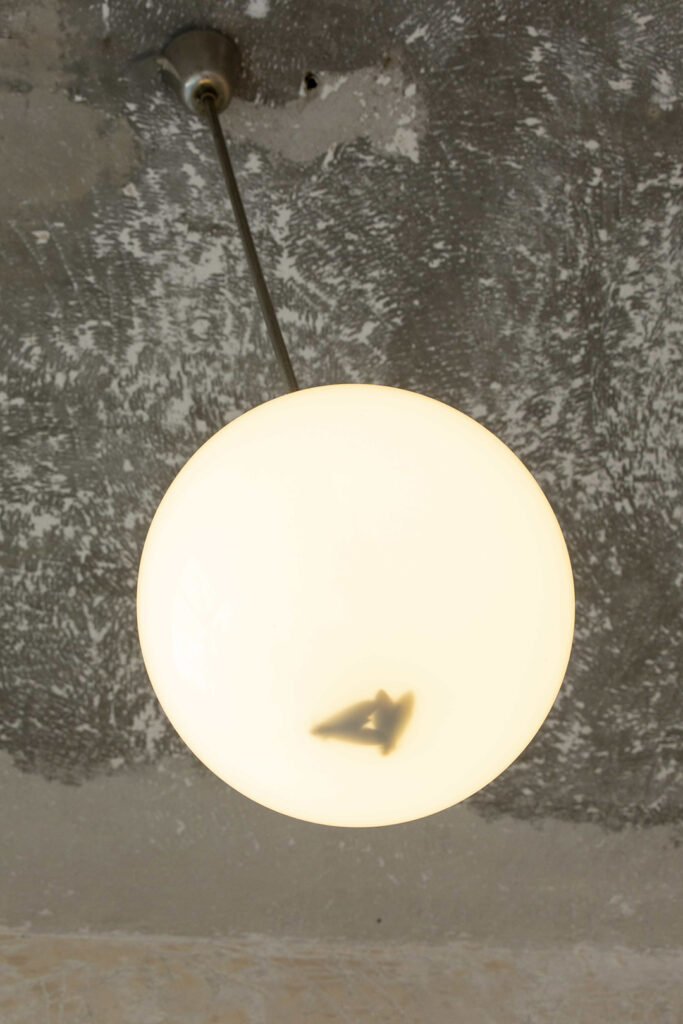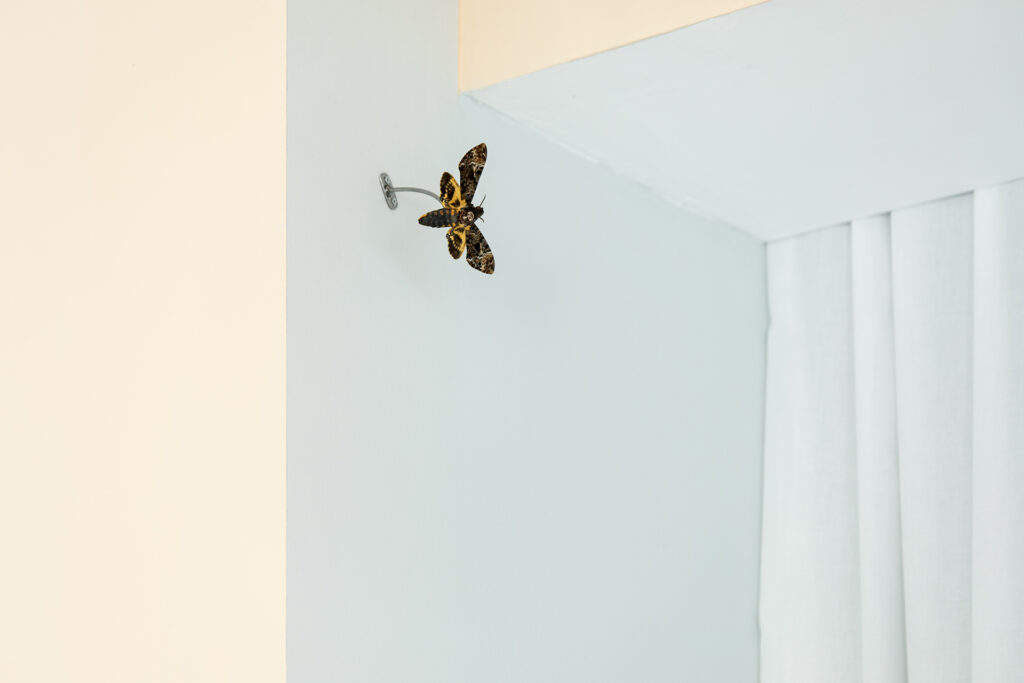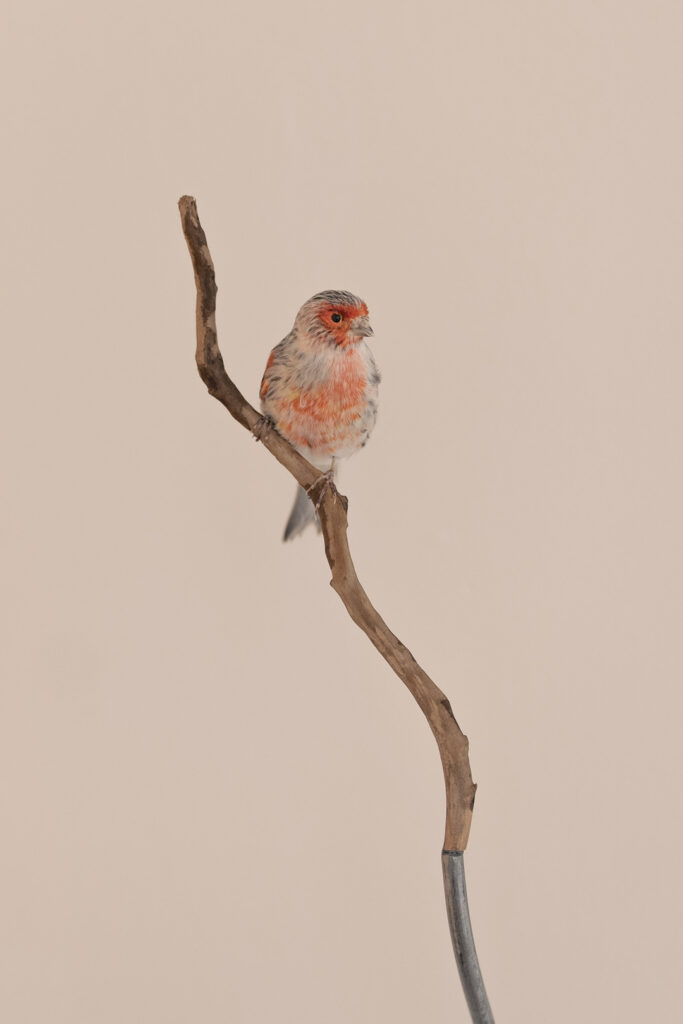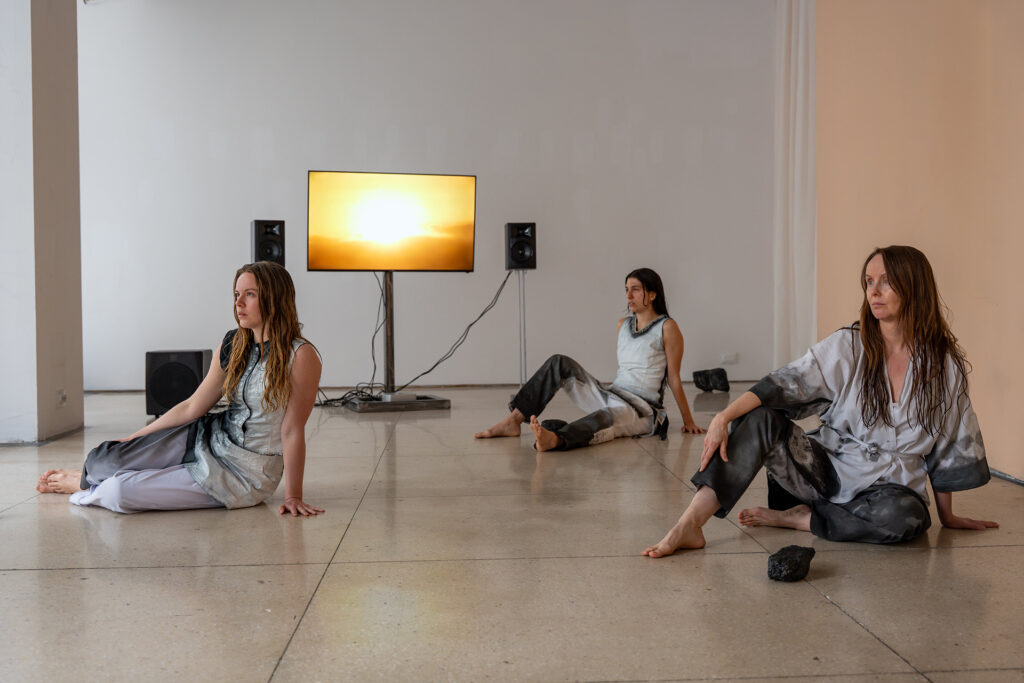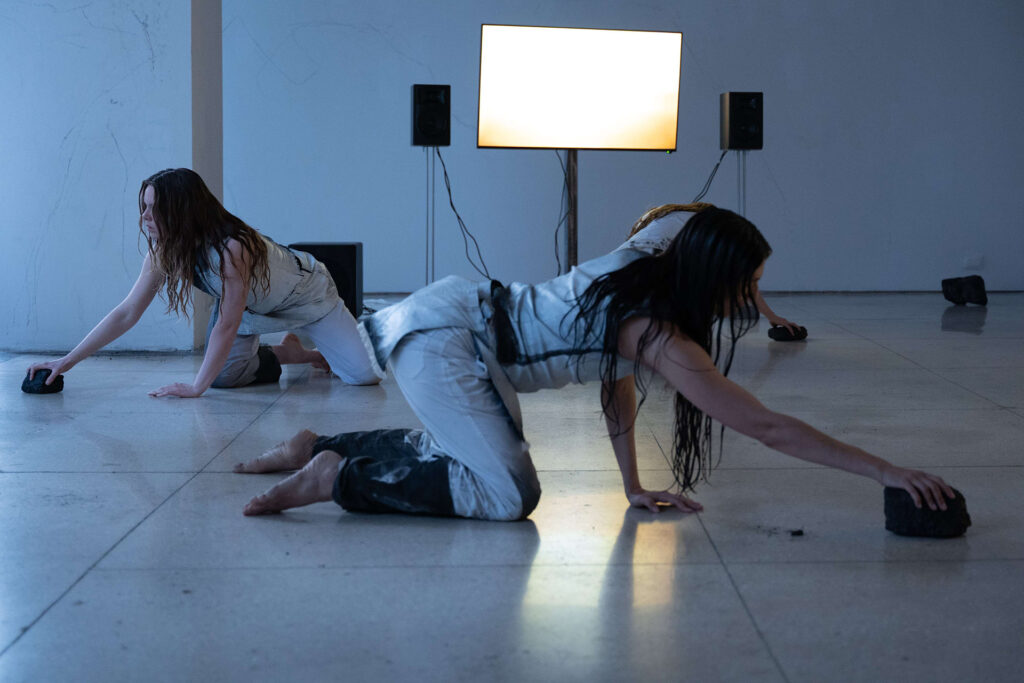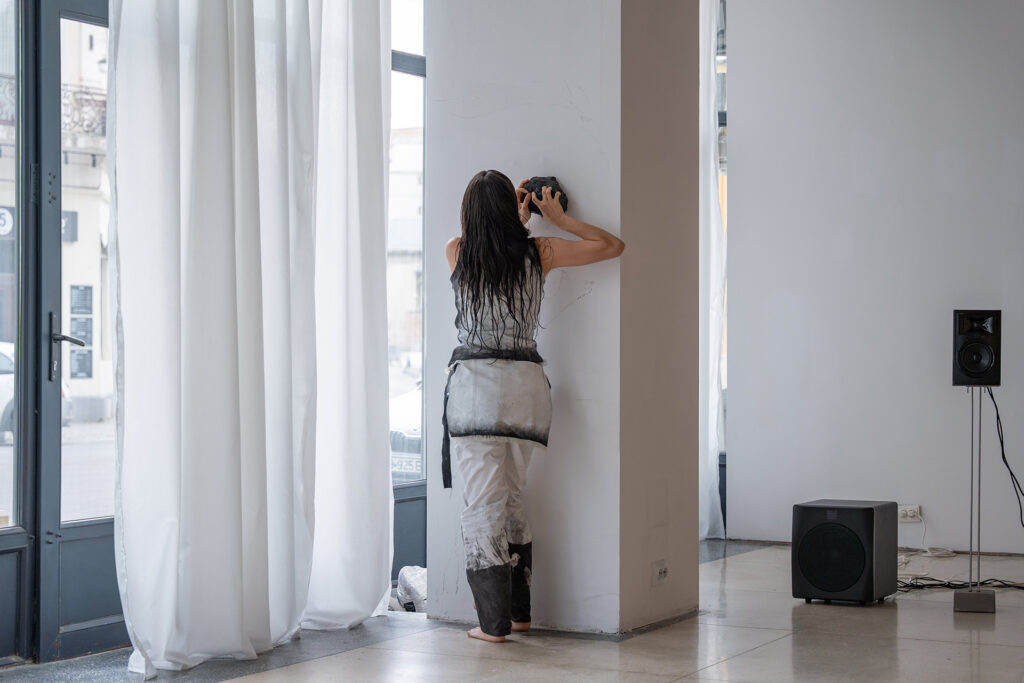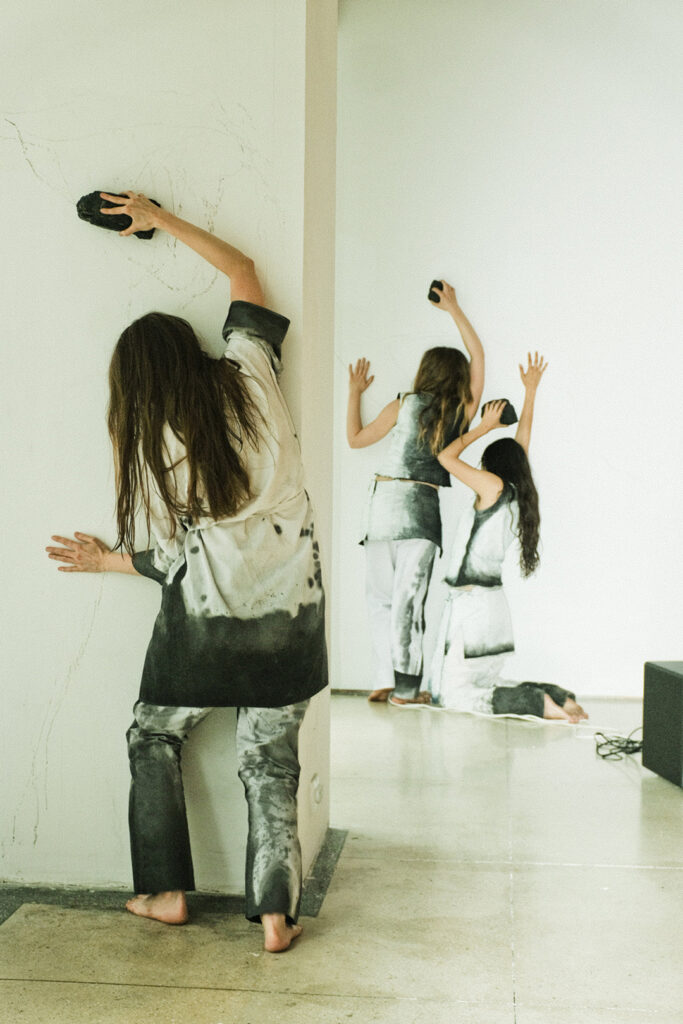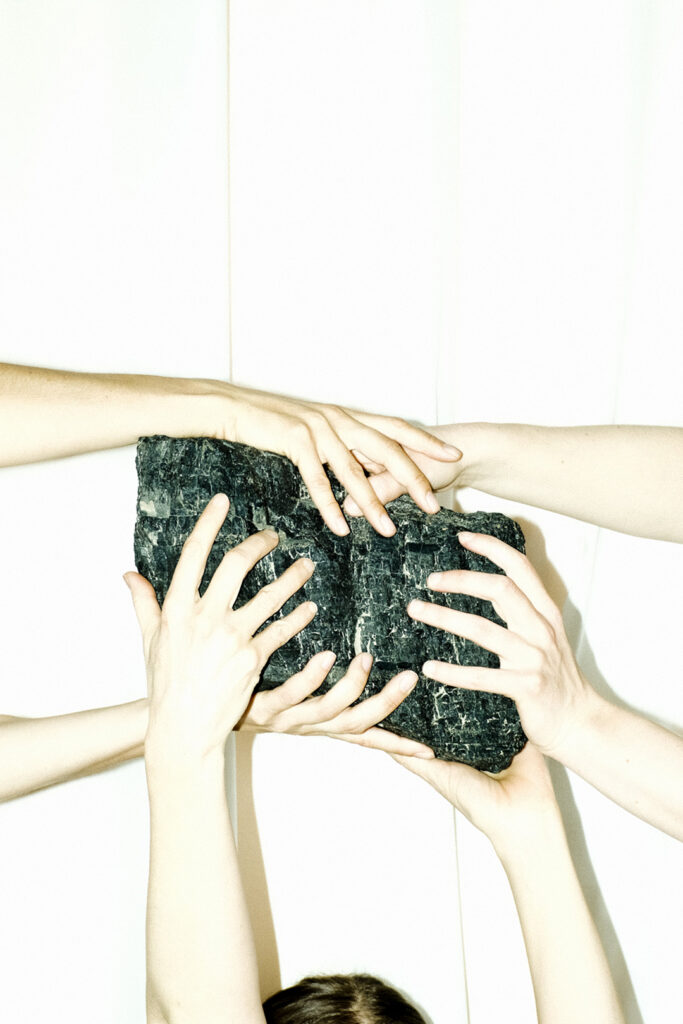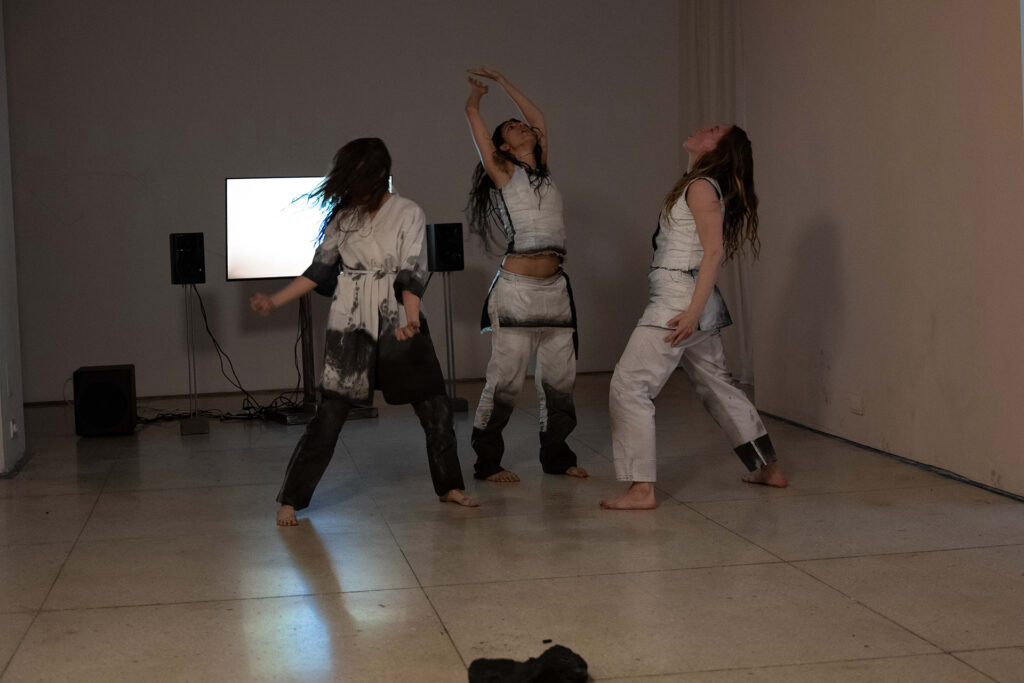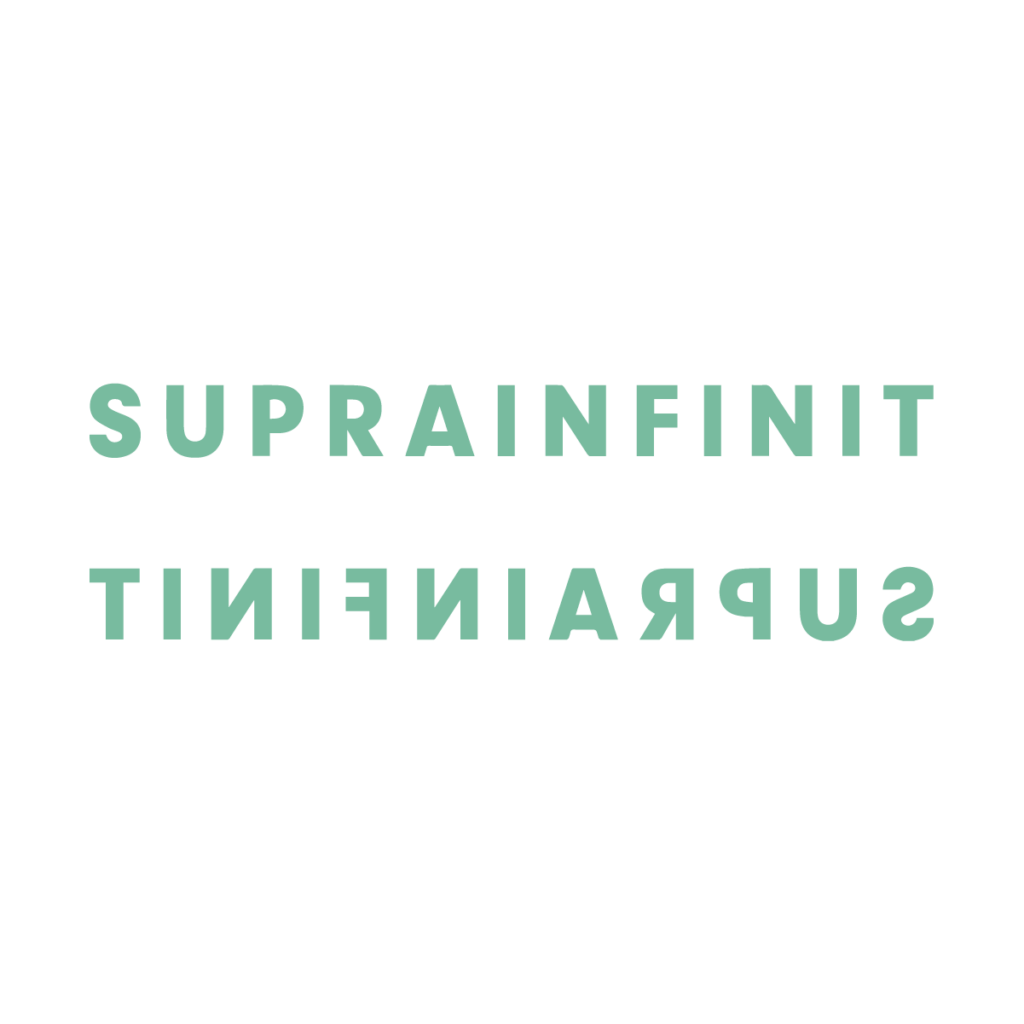11.04. – 08.06.2024
Suprainfinit Gallery
An exhibition curated by Cristina Vasilescu
Kjersti Vetterstad’s installation effects a poetic estrangement on ‘the Home’ as a site of withdrawal from geopolitical problems, luring the visitor in an affective encounter with the complicated feelings generated by the climate emergency. As the exhibition displaces the categories of private/public, inside/outside, natural/mass-produced, the defamiliarizing atmosphere settles in the body the more time is spent within its realms. Supernatural forces seem to break off the homely surface that promises stability and order. Sun beds, a stuffed canary bird on a wooden-metal stick, dried moths, and three chunks of coal infiltrate the TV-set equipped, minimalist living room.
Central to the exhibition is the new video work Slow Burn (2024), addressing the painful sense of isolation that results from the commodification of desire and fear. The entertainment industry tends to normalise and naturalise the promise of material well-being as universal by further entrenching the stratifications of consumer culture. In this context, the fantasy house acts both as the need to safeguard oneself from unknown dangers, and as the ultimate effect of people’s desire to “compensate for their dislocations and impoverished experiences in the economy” [1]. The video borrows elements of drama and suspense from the soap opera genre, reflected in the protagonist’s emotional states that bafflingly shift between longing, contempt, fear, and self-fulfillment.
Sensorially emplacing the video’s content, the installationfunctions as an immersive environment in which things are no longer commodities, but matters of (urgent) concern in a carefully choreographed gathering [2]. Slow Burn sparked as a meditation on the complexities of coal as a combustible sedimentary rock. Coal’s materiality stores the histories of other-than-human presences, past ecological and geological processes, forming through the gradual decay of dead plant matter. Storing the history of sun, water, wind, and living organisms. Since the Industrial Revolution, coal has functioned as an energy catalyst, being materially co-opted in the speeding up of technological progress to a planetarily threatening pace. The main source for electricity production globally still, coal is intimately entangled with political power and processes of capital accumulation. Equally, the stuffed canary bird in the exhibition space attests to the animal labour and multispecies exploitation involved in coal extraction–well into the 20th century, caged canary birds were brought down into the coal mines to alert workers of high levels of air toxicity.
Slow Burn makes visible the multiple agentive capacities of organic and inorganic bodies by exacerbating the human responses in these affective circuits [3]. In the video, the presence of the sea, wind turbines, coal, soil, pigeon, and cat provoke enchanted aggravations that take hold of the protagonist’s body, culminating with an identity split in which one Self passively remains in the unreality of her safe home, watching the broadcast of a space rocket launch; the other Self goes into the world, greeting and dissolving into the sea, performing dissociative acts as “inventive alterations of receptivity” to the biopolitical realities of climate breakdown [4]. Materially-bound mental responses also inhere in the exhibition space: the sonic vibrations of Vera Dvale’s accompanying sound piecesmove through the space and touch the surfaces of the visitors’ skins, leaving no-body unaffected.
Text by Maria Persu
References
[1] Elizabeth Seaton,‘The Commodification of Fear’, Topia, 5(1), 2001, p. 8.
[2] Bruno Latour, ‘Why Has Critique Run out of Steam? From Matters of Fact to Matters of Concern’, Critical Inquiry, 30(2), 2004.
[3] Jane Bennett, Vibrant Matter: A Political Ecology of Things, Duke University Press, 2009.
[4] Lauren Berlant, On the Inconvenience of Other People, Duke University Press, 2022, p. 120.
Video Credits
Performer: Georgiana Dobre
Concept, camera work and edit: Kjersti Vetterstad
Music composition: “To want you” and “Dybden” by Vera Dvale
018 – Wania – WANIA 9106
iPad text fragment adapted from Pier Paolo Pasolini’s Medea (1969)
